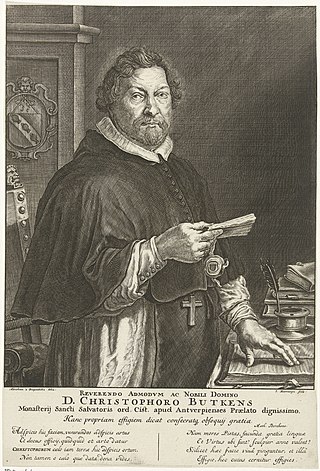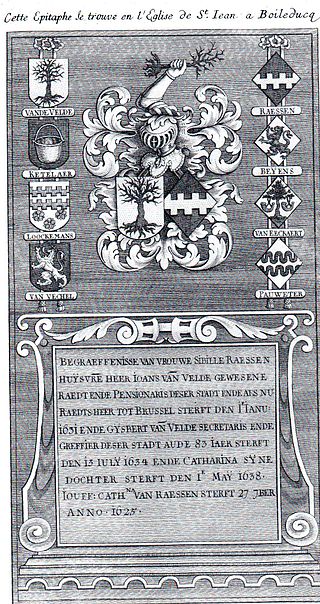List
Lord of Saventhem and Sterrebeke
Early mentions prove that Saventem was property of the house of Crayenhem. The second familie that had owned Zaventem is considered the noble house of vander Meeren, for several centuries they resided in Zaventem.
Henri vander Meeren, Lord of Saventem,
died 1395: buys in 1381 Saventhem. [3]
- Godfrey vander Meeren, Lord of Saventhem, died 1437:
Married Catherine of Erps.- Jean vander Meeren, Lord of Saventhem.
- Henri vander Meeren, Lord of Saventhem:
Married to Anne of Cuyck.- Philip I vander Meeren, Lord of Saventhem, died 1524:
Married to Maximilienne van der Noot, Lady of WestWesel and Morchhoven .- Henri vander Meeren, Lord of Saventhem
- Wauthier vander Meeren, Lord of Saventhem, died 1568;
Married to Catherine of Nassau.- Philippe II vander Meeren, Lord of Saventem, Sterrebeke and Westwesele:
Married to Marie van der Noot- William vander Meeren, Lord of Saventhem:
Married to Joanne of Ullens
- William vander Meeren, Lord of Saventhem:
- Philippe II vander Meeren, Lord of Saventem, Sterrebeke and Westwesele:
- Philip I vander Meeren, Lord of Saventhem, died 1524:
- Henri vander Meeren, Lord of Saventhem:
- Jean vander Meeren, Lord of Saventhem.
- Godfrey vander Meeren, Lord of Saventhem, died 1437:
William sold Saventhem to Ferdinand van Boisschot
Barons of Saventhem

In 1621 Ferdinand van Boisschot did buy Zaventem and Sterrebeek. He was created by grace of the sovereign 1st Baron of Saventhem in 1621. His descendants kept Saventhem until the French Revolution.
Ferdinand van Boisschot , 1st Baron of Saventhem and Sterrebeke. [4]
- Frans van Boisschot, 2nd Baron of Saventhem:
married to Adrienne-Florence de Lannoy .- CharlesErnest François de Boisschot, 3rd Baron of Saventhem:
married to Adrienne Florence, comtesse de Lannoy.- EugèneGuislain Valentin de Boisschot, 4th Baron of Saventhem. Died without heirs. [5]
- HélèneHyacinthe Valentine Thérèse de Boisschot, Baroness of Saventhem x Karl Ferdinand, Graff von Königsegg-Rothenfels , a brother of Maximilian Friedrich von Königsegg-Rothenfels.
- CharlesErnest François de Boisschot, 3rd Baron of Saventhem:
- Frans van Boisschot, 2nd Baron of Saventhem:










